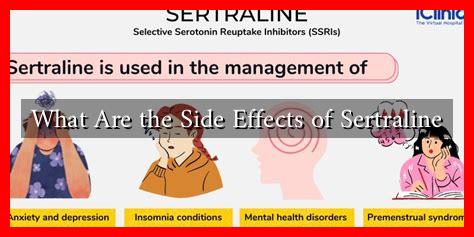-
Table of Contents
What Are the Side Effects of Sertraline?
Sertraline, commonly known by its brand name Zoloft, is a selective serotonin reuptake inhibitor (SSRI) widely prescribed for the treatment of depression, anxiety disorders, obsessive-compulsive disorder (OCD), and post-traumatic stress disorder (PTSD). While it is effective for many patients, like all medications, sertraline can cause side effects. Understanding these side effects is crucial for anyone considering or currently taking this medication.
Common Side Effects of Sertraline
Most patients tolerate sertraline well, but some may experience side effects. Common side effects include:
- Nausea
- Diarrhea
- Dry mouth
- Fatigue
- Insomnia
- Sexual dysfunction
- Weight gain or loss
According to a study published in the Journal of Clinical Psychiatry, approximately 30% of patients report experiencing sexual side effects, which can include decreased libido, delayed ejaculation, or anorgasmia. These side effects can significantly impact a patient’s quality of life and may lead to discontinuation of the medication.
Less Common but Serious Side Effects
While most side effects are mild and manageable, some can be more serious. These include:
- Serotonin syndrome
- Increased risk of bleeding
- Severe allergic reactions
- Mania or hypomania in individuals with bipolar disorder
- Suicidal thoughts or behaviors, particularly in young adults
Serotonin syndrome is a potentially life-threatening condition that can occur when sertraline is taken in conjunction with other medications that increase serotonin levels. Symptoms may include confusion, rapid heart rate, and high blood pressure. If you suspect serotonin syndrome, it is crucial to seek immediate medical attention.
Understanding the Risk Factors
Not everyone will experience side effects from sertraline, and the severity can vary based on individual factors. Some risk factors include:
- Age: Older adults may be more susceptible to side effects.
- Other medications: Interactions with other drugs can increase the risk of side effects.
- Pre-existing health conditions: Conditions such as liver disease or a history of seizures can heighten risks.
For instance, a case study published in the American Journal of Psychiatry highlighted a patient with a history of bipolar disorder who developed manic symptoms after starting sertraline, underscoring the importance of careful screening before prescribing SSRIs.
Managing Side Effects
For many patients, side effects diminish over time as the body adjusts to the medication. However, if side effects persist or become intolerable, it is essential to consult a healthcare provider. Strategies for managing side effects may include:
- Adjusting the dosage
- Switching to a different medication
- Incorporating lifestyle changes, such as diet and exercise
- Utilizing therapy or counseling to address underlying issues
In some cases, healthcare providers may recommend a gradual tapering off of sertraline to minimize withdrawal symptoms, which can also occur when discontinuing the medication abruptly.
Conclusion
Sertraline is a valuable tool in the treatment of various mental health conditions, but it is not without its side effects. While many patients experience only mild side effects, others may face more serious complications. Understanding these potential side effects, recognizing risk factors, and knowing how to manage them can empower patients to make informed decisions about their treatment. Always consult with a healthcare provider for personalized advice and to ensure the best possible outcomes when using sertraline or any other medication.

